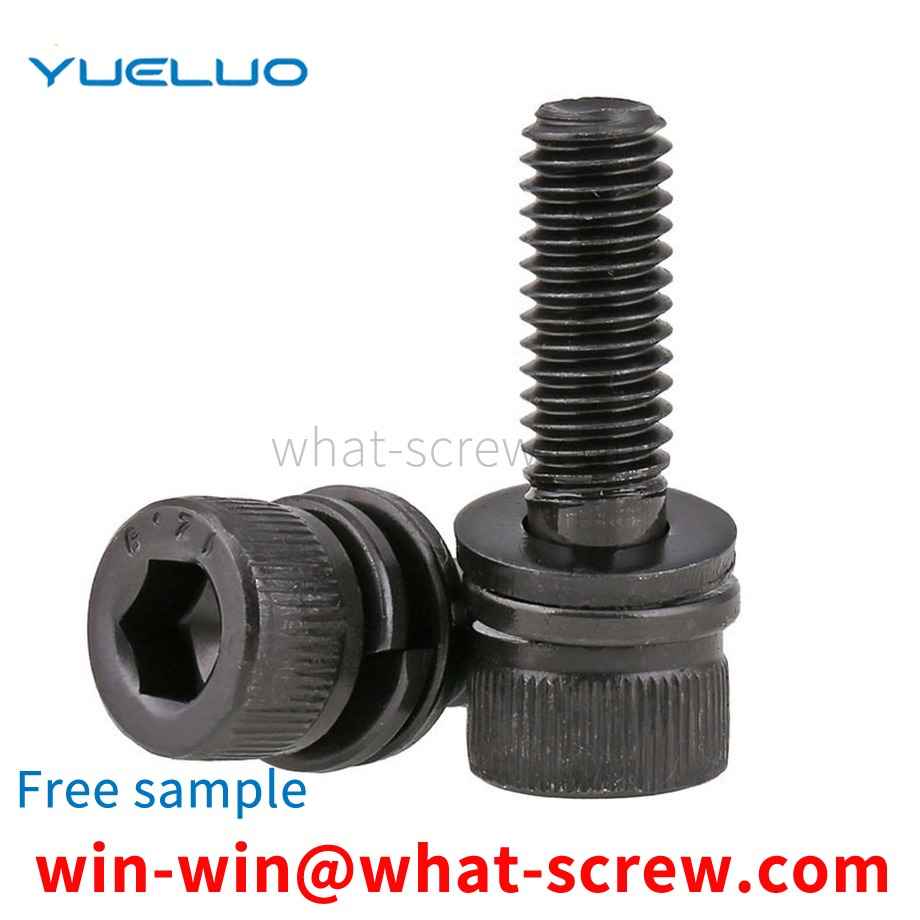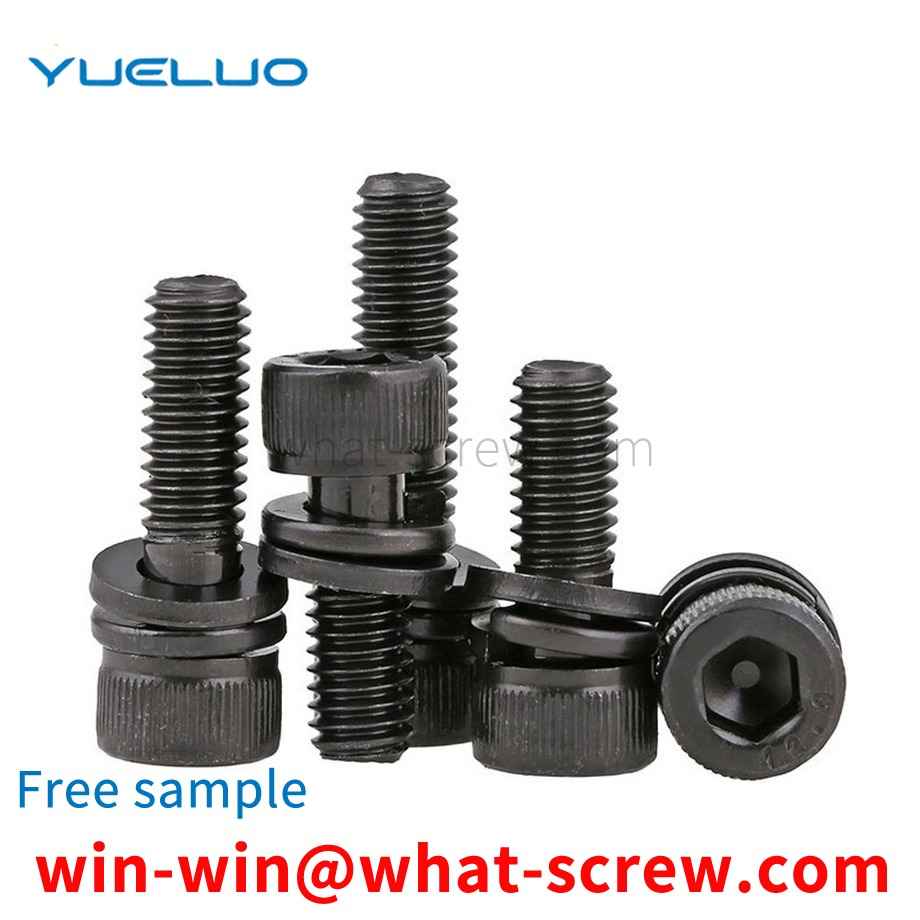The existing method of tightening large screws is generally 1. After the nut is screwed to the connected piece by hammering + nut angle method, use a casing to connect the lever arm of the wrench, or use a free hammer to hammer the plate handle, Rotate the nut an additional angle to obtain the required preload. This is not only a primitive and labor-intensive fastening method, but also has great limitations, such as limited space, or the screw itself is a rotating shaft and so on, it is difficult to use this method.
Screw, some people call it screw [Screw] (screw), screw (screw rod). In fact, the screw is a general term, and the screw and the screw rod are different from each other. Screws are generally called wood screws to fasten wooden and plastic parts. The screw rod is a machine screw (machine screw), which is the kind of flat head at the front end. The pitch is small and uniform. It is generally used to fasten metal and machine parts. With the development of society, the materials for making screws are also various, and the functions of screws are becoming more and more diverse.
Sprinkle the excess standard spring washer 7 on the positioning plate 12-1 on the spring washer positioning plate 2, and shake the spring washer positioning plate 2 by hand. After a short time, the spring washer 7 will be positioned and arranged on the upper positioning plate 12-1. In the upper spring washer hole 2-7, since the width of the opening groove 12-32 of the baffle plate 12-3 is smaller than the diameter of the spring washer hole 2-7, and the thickness of the upper positioning plate 12-1 is designed according to the thickness of the spring washer 7, Only one spring washer 7 can be accommodated in the spring washer hole 2-7 of each upper positioning plate 12-1, and the excess spring washer 7 is cleaned with a brush.
Blind hole installation type rivet is a kind of rivet for single-sided riveting. When riveting, special riveting tools, such as pull riveting, rotary riveting, etc., are required. Blind hole installation type rivets are especially suitable for riveting occasions where it is inconvenient to use ordinary rivets to be riveted from both sides. At present, blind hole type blind rivets mainly include rivet blind rivets and blind blind rivets. Most blind rivets of blind hole type contain a lock ring, through which the core rod is locked into the nail sleeve, and there is a common lock ring. Risks of falling off, insufficient clamping force, etc., and the matching relationship of each sub-part in the processing process must be strictly coordinated to ensure the best installation effect; most of the screw-type blind rivets screw the thread through the driving nut to make the nail body or pipe The body is deformed to form a bulge, and the clamping force and anti-vibration ability after installation are much stronger than that of the rivet type, but there are also many sub-parts to drive the nut, mandrel, nail body, tube body, the processing process and the matching of each sub-part When the thickness of the interlayer is different, the fractured part of the core rod is not flush with the interlayer board. For the installation parts with high flatness requirements, air tools are often required to mill them flat.
The difference between high-strength bolt friction type and pressure-bearing type connection: High-strength bolt high-strength bolt connection is to clamp the plate of the connecting plate through a large tightening pre-pressure in the bolt rod, which is enough to generate a large friction force, thereby improving the connection. The integrity and stiffness of the bolt can be divided into two types: high-strength bolt friction type connection and high-strength bolt pressure type connection according to different design and force requirements when subjected to shear force. The essential difference between the two is that the limit state is different, although It is the same kind of bolt, but it is very different in terms of calculation method, requirements, and scope of application. In the shear design, the friction type connection of high-strength bolts is the limit state when the external shear force reaches the possible maximum friction force provided by the bolt tightening force between the contact surfaces of the plates, that is, the internal and external shear force of the connection is guaranteed not to exceed maximum friction. The plate will not undergo relative slip deformation (the original gap between the screw and the hole wall is always maintained), and the connected plate will be elastically stressed as a whole. In the design of shear resistance, the external shear force is allowed to exceed the maximum friction force in the high-strength bolt-bearing connection. At this time, relative slip deformation occurs between the connected plates until the bolt rod contacts the hole wall, and then the connection depends on the bolt rod. The shearing of the body and the bearing of the hole wall and the friction between the contact surfaces of the plates jointly transmit the force, and finally the shearing of the shaft or the bearing of the hole wall is regarded as the limit state of the connection shearing. In a word, friction type high-strength bolts and pressure-bearing high-strength bolts are actually the same type of bolts, but whether the design considers slippage. Friction type high-strength bolts can never slide, and the bolts do not bear shear force. Once slipped, the design is considered to reach a state of failure, which is technically mature; pressure-bearing high-strength bolts can slide, and the bolts also bear shear force, and the final damage is equivalent to ordinary Bolt failure (bolt shearing or steel plate crushing).
We have many years of experience in the production and sales of screws, nuts, flat washers, etc. The main products are: high-strength screw caps, small screw nuts, 8.8 grade carbon steel washers, hexagonal nuts and screws and other products, we can provide you with suitable fastening for you piece solution.



















 Service Hotline
Service Hotline




